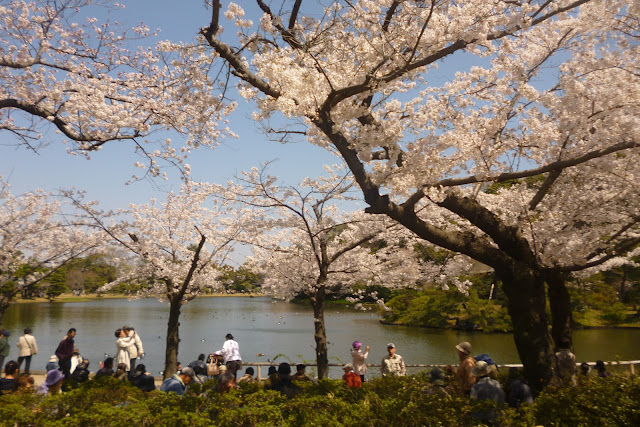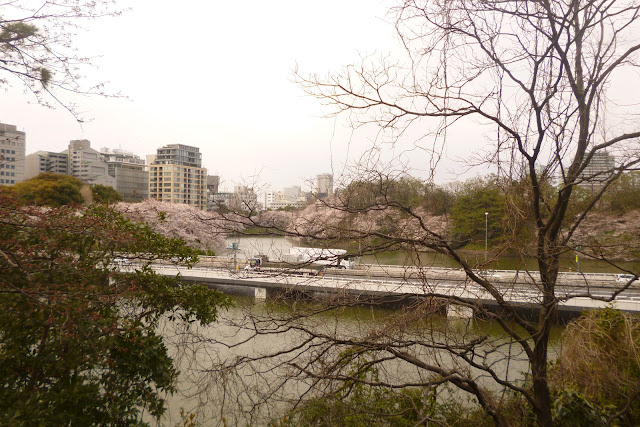by vichanda@purebright
[This essay reflects the lessons and insights I learned after visiting the ruins of Ayutthaya (Thailand) and Ankor (Cambodia). I would like to dedicate this piece to Dr. Panwilai Chomchid and Dr. Methinee Wongwanich Rumpagaporn, my generous hosts cum tour guides, of Rajabhat Mahasarakham University and Kasetsart University, Thailand, respectively, who facilitated my visits in these two places of great historical and cultural value.]
********
Kanami gali nga batyagon kon ang imo nabasa, makit-an mo sa personal.
Ang
ruins sang Ginhari-an sang
Ayutthaya makit-an sa Ayutthaya Province, Thailand samtang ang iya naman sang Khmer
empire and civilization makit-an sa
Ankor, Siem Reap Province, Cambodia. Ang Ayutthaya kag Ankor nangin sentro sang madamo nga pagpanalawsaw sang mga
historians kag
anthropologists tungod kay ang mga ini nagbilin sang pruweba sang kabantog kag himaya sang duha ka mga ginaharian. Ako nakabasa sang mga
feature stories parte sini sa
National Geographic nga nagdabok sang akon handum nga tani makakadto man sa mga lugar nga ini.
Daw indi mapatihan, apang nag-abot gid man ang kahigayunana nga mataga-an sang katumanan ang akon mga handum. Sa akon pagtinir sa Pungsod sang Thailand, mga 6 ka bulan, nataga-an ako sang kahigayunan nga makita-an sang akon mga mata kag mahikap sang akon mga kamot ang ginabantog nga mga ginharian kag templo sa Ayutthaya, Thailand (sang July 20, 2011) kag Angkor, Siem Reap, Cambodia (sang December 3-4, 2011).
Sang makit-an ko ang mga ini, ano ang akon nabatyagan? Siyempre, ako nakum-an, nakunyag, nalipay, kag may madamo pa gid nga nagkasari-sari nga nabatyagan. Nakahambal ako nga, "
Wow," dala pagguwa sa bibig sang pagdayaw, paghangad, kag nagpadungog. Hu-o ang mga nagkalabilin sang templo kag ginhari-an sa
Ayutthaya kag
Ankor tuman gid katahum! Filipino man ako, bisan paano, nakabatyag ako sang ginatawag nga
regional pride. May mga duma-an man gali nga
structures diri sa Southeast Asia, indi lang ang mga
pyramids sa Egypt ukon mga
ruins sang Mayan Empire sa South America Apang, samtang nagalantaw ako sang mga ini, insa nga may tublok sang kasubo ako nga nabatyagan? May pamangkot nga nagsulod sa akon paino-ino, "Nga-a nangin amo sini ang ginharia-an sang Ayutthaya kag Ankor?"
Pilit ko man nga ginasikway, apang naga-balik-balik sa akon paino-ino ang mga
ruins nga akon nakit-an
kag
ang binalaybay nga
Ozymandias, ginsulat ni
Percy Bysshe Shelley sang 1818. Akon nga igapatpat sa idalum ang kahulugan sang Ozymandias. Tinguha-an ko nga ipaathag ang kaangtanan sini sa akon nakit-an nga mga ruins sa Ayutthaya kag Angkor.
Ozymandias
by Percy Bysshee Shelly
1 I met a traveler from an antique land
2 Who said: "Two vast and trunkless legs of stone
3 Stand in the desert. Near them on the sand,
4 Half sunk, a shattered visage lies, whose frown
5 And wrinkled lip and sneer of cold command
6 Tell that its sculptor well those passions read
7 Which yet survive, stamped on these lifeless things,
8 The hand that mocked them and the heart that fed.
9 And on the pedestal these words appear:
10 'My name is Ozymandias, King of Kings:
11 Look on my works, ye mighty, and despair!'
12 Nothing beside remains. Round the decay
13 Of that colossal wreck, boundless and bare,
14 The lone and level sands stretch far away".
Ang
poem, Ozymandias, isa ka
sonnet, may 14 ka dinalan. Sa una nga linya (
I met a traveler...), makit-an naton ang duha ka character, ang nagsulat sini (
the poet) kag ang nagpanglugayawan (
the traveler). Ang manunulat may nabatian sa manogpanglugayawan, ang istorya nabutang sa
quotation marks. Ari ang mga
imageries nga makit-an naton sa ginsugid sang manogpanglugayawan: May rebolto, dalagko nga bati-is, wala na sang lawas, nagatindog sa disyerto (lines 2-3). Sa ingod sini,
halfway natabunan sang balas, ang ulo sang rebolto (3-4). Ang rebolto amo si Haring
Ozymandias (line). Bisan sa kadugayon na sang nagliligad, ang itsura kag
character sang hari na-
capture sang manogdihon -- makahaladlukan kag dapat katahapan,
possibly a ruthless, cold-hearted king (line 5). Ang
interesting ara sa
line 7 and 8: ..."
Which yet life survive, stamped on this lifeless things, The hand that mocked them and the heart that fed." Ang
works of art sang manogdihon nagapabilin man gihapon sa rebolto: ang pagyaguta sang
artist gindabukan sang iya inspirasyon, ang matig-a nga balatyagon sang hari. Ano natabo kay
Ozymandias kag sang iya ginhari-an? Ini makit-an sa
lines 11-14 kag na-
capture sa linya nga "
Look on my works, ye mighty and despair!" Wala na kag wala sang may nabilin. Wala na ang ginharian, wala na ang mga simbolo sang gahum kag himaya. Ang makit-an, puro na lang baras sa malapad nga disyerto.
Ang tema sang
Ozymandius natuhoy sa
temporal nature of power and glory o
f a person in authority. Ang tanan temporaryo lang. Ang gahum kag ang himaya, may katapusan. Wala sang may nagabato sa kalibutan.Gani, kon taga-an kita sang temporaryo nga gahum, dapat gamiton naton ini para sa kaayuhan. Ang
subtle nga
meaning sang
poem: ang
art sang manogdihon nagapabilin man gihapon bisan nga wala na ang hari kag ang iya ginharian.
Karon ano ang kaangtanan sang
Ozymandias sa akon nabatyagan sang makit-an ko ang
ruins sang Ayutthaya kag Ankor? Ang koneksyon daw tama na gid ka
obvious. Ang mga ginhari-an kag ang mga hari sini, bisan pa sa kadugayon sang ila pagdumala, wala nagatinir tubtub san-o.Tanan may katapusan. Ang sobra 300 ka tuig nga
dynasty o pagdumalahan sang mga nagkasari-sari nga hari sa duha ka ginhari-an natapos gid man. Wala na! Ang mga templo kag palasyo, nagkalaguba, amat-amat nga nagkalamudmud. Wala na ang mga hari. Wala na ang daynastiya.
Apang indi katulad sang palasyo ni Ozymandias nga gintabunan sang balas, bisan paano, may nagkalabilin nga mga ruins sa ginhari-an sang Ayutthaya kag Ankor. Salamat, ari ako, naga-apresyar sang ila katahum.
Hail to the hands that built them!
----------------
I would like to acknowledge the Nippon Foundation for its generous support of my research activities in Thailand and Japan. My understanding of indigenous and culturally relevant science education in both countries has been contextualized by my travels to places of great historical and cultural value like Ayutthaya and Ankor.
 |
| Wat Chai Watthanaram and the remnants of the glorious Kingdom of Ayutthaya, Ayutthaya Province, Thailand |
 |
| Remnants of Wat Chai Watthanaram, Ayutthaya, Ayutthaya Province, Thailand |
, |
| Bhudda's head buried under the roots of a tree, Wat Mahathat, Ayutthaya, Thailand |
|
 |
| More remnants.... |
 |
| Wat Chai Watthanaram |
 |
| Our group--professors of Kasetsart University (Bangkok) and guests from the University of North Colorado--posed with Wat Chai Watthanaram as a background. |
 |
| Bayon, a richly and intricately decorated temple in Angkor, Siem Reap Province, Thailand |
 |
| Phnom Bakheng, located atop the mountain, is one of the oldest temple in Ankor, Siem Reap, Cambodia. |
 |
| Ankor Thom, setting of Angelina Jolie's movie, Lara Croft: Tomb Raider |
 |
| Bayon Temple |
 |
| Smaller temples in Angkor, Siem Reap,Cambodia |
 |
| Bayon, an intricately designed temple in Angkor, Siem Reap, Cambodia |
 |
| A picture with the couple, Poom and Charin, with Ankor Wat as a background |
 |
| Our group, teachers/university professors of Mahasarakham, Thailand |




























































